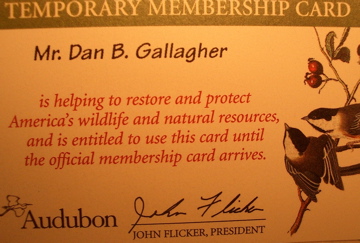The best weather reading out there — and I know one person in Napa who will back me up on this — is the forecast discussion produced several times a day by regional offices of the National Weather Service (for the San Francisco Bay Area, you can find it here). What’s good about it is that, even if it gets a little technical, you’re reading a real forecaster (as opposed to the TV kind) explain all the factors that go into the weather outlook.
The most striking revelation in the discussions is the degree to which forecasters rely on global models to come up with their picture of the weather over the next week. The models aren’t a secret, of course. But a large part of the discussion in any period of complex weather deals with how to resolve the disagreements among the many models, each with its own prediction about conditions 12 and 24 and 48 hours and (much) more from now, that are used to develop the public forecast. The resolution is often done by balancing a model’s behavior in various circumstances with the forecaster’s hunch about which of several outcomes might be true. It’s funny to see the TV weather folks deliver a "this is the way I see it" prediction knowing that a lot of their brow-furrowing is borrowed directly from the forecast discussion.
Now, among weather discussions, the best reading has to be the National Hurricane Center‘s tropical storm discussion. I think the reason is obvious: A lot more is at stake in a hurricane forecast, and the meteorologists wring their hands even more than usual about getting things right. But there’s another factor that makes the hurricane discussions fascinating: Tropical storm systems are so complex, with so many unknowns, that sometimes the models begin to diverge wildly on the forecast. The more powerful the storm — or the more variables to account for, such as adjacent weather systems, in figuring out where the storm is going — the more the models. At the mercy of what a computer is spitting out, the person whose name appears at the bottom of the discussion — another reason I like these writeups — sometimes is compelled to come out and say, you know, we can only guess what might happen two or three days from now with this thing.
I’ve read this kind of concession maybe half a dozen times this hurricane season, and three times in just the last couple of days in discussions of Hurricane Wilma. The statement issued at 5 p.m. EDT today was a classic — it started right into the problems with the models:
"HURRICANE WILMA DISCUSSION NUMBER 18
NWS TPC/NATIONAL HURRICANE CENTER MIAMI FL
5 PM EDT WED OCT 19 2005
"AGREEMENT AMONG THE TRACK GUIDANCE MODELS…WHICH HAD BEEN VERY GOOD OVER THE PAST COUPLE OF DAYS…HAS COMPLETELY COLLAPSED TODAY. THE 06Z RUNS OF THE GFS…GFDL…AND NOGAPS MODELS ACCELERATED WILMA RAPIDLY TOWARD NEW ENGLAND UNDER THE INFLUENCE OF A LARGE LOW PRESSURE SYSTEM IN THE GREAT LAKES REGION. ALL THREE OF THESE MODELS HAVE BACKED OFF OF THIS SOLUTION…WITH THE GFDL SHOWING AN EXTREME CHANGE…WITH ITS 5-DAY POSITION SHIFTING A MERE 1650 NMI FROM ITS PREVIOUS POSITION IN MAINE TO THE WESTERN TIP OF CUBA. THERE IS ALMOST AS MUCH SPREAD IN THE 5-DAY POSITIONS OF THE 12Z GFS ENSEMBLE MEMBERS…WHICH RANGE FROM THE YUCATAN TO WELL EAST OF THE DELMARVA PENINSULA. WHAT THIS ILLUSTRATES IS THE EXTREME SENSITIVITY OF WILMA’S FUTURE TRACK TO ITS INTERACTION WITH THE GREAT LAKES LOW. OVER THE PAST COUPLE OF DAYS…WILMA HAS BEEN MOVING SLIGHTLY TO THE LEFT OR SOUTH OF THE MODEL GUIDANCE…AND THE LEFT-MOST OF THE GUIDANCE SOLUTIONS ARE NOW SHOWING WILMA DELAYING OR MISSING THE CONNECTION WITH THE LOW. I HAVE SLOWED THE OFFICIAL FORECAST JUST A LITTLE BIT AT THIS TIME…BUT IF WILMA
CONTINUES TO MOVE MORE TO THE LEFT THAN EXPECTED…SUBSTANTIAL CHANGES TO THE OFFICIAL FORECAST MAY HAVE TO BE MADE DOWN THE LINE. NEEDLESS TO SAY…CONFIDENCE IN THE FORECAST TRACK…ESPECIALLY THE TIMING…HAS DECREASED CONSIDERABLY. …
FORECASTER FRANKLIN"
There it is: actual bitter irony; from a hurricane forecaster. "With the GFDL [Geophysical Fluid Dynamics Laboratory model] showing an extreme change … with its 5-day position shifting a mere 1650 NMI [nautical miles] from its previous position in Maine to the western tip of Cuba."
Technorati Tags: hurricanes, wilma


